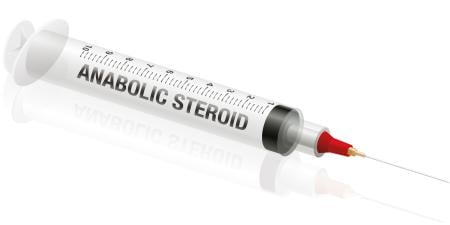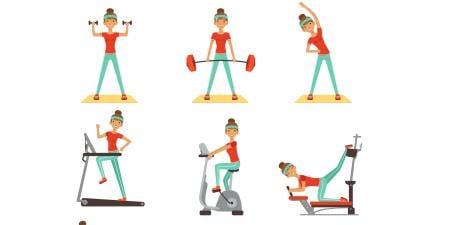Case
Dr. Wendy Wilson's next appointment is with Steffi Jones, a youngster in her family practice who has comes to the doctor's office to get her medical forms signed for a school team checkup. Dr. Wilson is asked to approve 12-year-old Steffi's participation in gymnastics team activities. Her parents are with her, and they talk excitedly about how talented their child is at gymnastics. Both parents love sports. Steffi already trains after school on a regular basis with a local gymnastics club and has done so since she was 5 years old. Her parents believe she will do well in a regional amateur competition. She now has a chance to win the recognition that will enable her to train with an Olympic-class coach.
The physician congratulates Steffi on her accomplishments. Dr. Wilson is troubled by the thought of the pressure that is likely to be placed on Steffi to perform well, both in sports—two teams seems like one too many—and in school. Can the child meet the physical and mental demands of practice and competition at a more elite level? Dr. Wilson asks Steffi about this, and finds out she knows she is placing her gymnastics ahead of her schooling, but gymnastics is what she thinks she's good at, so she doesn't mind. She knows some of her teachers are disappointed and she's heard there's going to be a lot more homework this year. Steffi is also starting to show signs of puberty. Dr. Wilson discusses this with her and asks her about her nutrition. Steffi admits that she needs to stay thin to compete but is not concerned about the impending changes in her body. Dr. Wilson decides it's beyond her duty to intervene at this point, and somewhat reluctantly certifies the child for participation in school sports since she is in excellent physical condition.
She suggests to the parents, however, that they keep a watch on their child and monitor whether they think they're overcommitting her to too many sports activities. Dr. Wilson mentions the possibility of overuse injuries along with the physical and psychological demands of competing at this level. Would the Joneses be willing to consider dropping one of the teams? Her concern is met by surprised looks, and she gets the brush-off from the Joneses, who tell her not to worry--they'll be careful with Steffi. They thank her for the signed forms and leave. The doctor has a feeling they may not be back if she pushes too hard on this, but she is still concerned about Steffi.
Commentary 1
Sports can be one of the pure delights and thrills of youth. Participating in sports improves fitness by enhancing aerobic capacity, strength, and coordination, and by decreasing obesity, insulin resistance, and cardiovascular risk. Socially, sports are fun, and they build character, sportsmanship, and dedication. They teach rules and ethics. They can improve a child's time organization and may lead to better grades and a decrease in risk-taking behavior.
Presently more than 30 million children and adolescents participate in organized sporting activities. In the past, a single child typically participated in many different activities. Many more youngsters, however, are beginning to specialize in certain sports at younger and younger ages in hopes of Olympic Glory, professional contracts, and financial endorsements. Others specialize in hopes of making their high school team or obtaining a collegiate scholarship. Even though the fraction of these athletes who actually reach Olympic status ranges from 0.5 to 1 percent, parents are investing significant time in more intense training for their children, and athletic competition carries all the associated expectations for children—from collegiate scholarships to professional contracts and potential financial independence.
Along with the increased specialization and financial commitment comes the expectation of results and pressure for young people to excel at their chosen sport. Why has this happened? According to the National Institute for Sports Reform,1 society's emphasis on winning has spiraled out of control and pervades all aspects of sport from youth to professional. This attitude is the result of athletic achievement being rewarded by athletic scholarships or professional contracts, the corrupt practices at academic institutions that house big-time sports programs, and the commercialism and business aspects of preprofessional sports. Add to this the media scrutiny of such youth events as the Little League World Series and the Olympic Trials and Olympics for sports such as figure skating and gymnastics. The premium placed on winning and excelling has resulted in an increased number of overuse injuries among a younger population and an increased use of ergogenic aid use at younger ages. In addition, anecdotally, there has been a decline in sportsmanship. Reports of misbehavior and violence among athletes, parents, and coaches of youth sports are not uncommon. Ultimately, there has been a paradigm shift towards more competition and pressure on younger athletes. Less of their exercise and fewer of their recreational activities are done on a "play for joy" basis.
As in this clinical case, specialization affects more and more sports every year, with children encouraged to participate in a single sport year-round. Figure skating, ice hockey, gymnastics, soccer, tennis, and baseball are the classic sports where specialization is encouraged at a young age. Coaches and parents need to realize that not all children are ready to handle the physical and psychosocial demands associated with the intense training and specialization at such a young age. Growth, development, and maturation are integrated and continuous processes. Children need to acquire certain physical, cognitive, motor, language, auditory, sensory, visual, and social abilities in order to master the skills needed to advance in all sports.2 Not all children of the same age are at the same developmental stage. Specializing and pushing children before they are developmentally ready to participate may actually cause the child to quit sports. After that, he or she may not want to participate in any organized or semi-organized activity, fitness-based or not.
Possible advantages to sports specialization include early attainment and mastery of the skills required for a sport. In addition, many sports build from basic skills to advanced. Some people theorize that if a child does not master a skill by a certain age, he or she will never be able to because of loss of neuro-imprinting at the age when the skill is most effectively mastered. Finally, if the child does not master or maintain pace with peers in skill development, he or she will not be able to catch up and, hence, will lose an opportunity to participate on high school teams later in life.
Specific to Steffi, the potential disadvantages to specialization include possible motor imbalances from repetitive training, doing the same activity day after day. This may result in overuse injuries such as patellar tendonitis, Osgood-Schlatter, Sever syndrome, tennis elbow, or rotator cuff tendinopathy. Children and adolescents specializing in a single sport miss out on participation in other sports and recreational activities; possibly missing a chance to excel at a sport which may be better suited to their skill set, not to mention a chance to socialize with a different group of people. Academic demands may also be ignored in the specialized athlete. Individuals who only identify themselves as a specific sport-related athlete may be at risk for psychological problems when their dreams of actually competing at the elite level are not fulfilled.
For Steffi, the pressure to excel at such an image-conscious sport may increase her risk for developing a disordered eating problem, menstrual disturbance, and bone-mineral problems. As she moves further away from free play time and socialization with her friends and school, she risks more self-identification as a gymnast. Without the balance of school and socialization with peers who have other interests, the risk of psychological problems may increase, should her gymnastics career come to an end.
The primary care physician and parents are obligated to present both the advantages and disadvantages of sports specialization to the family in the described scenario. There is not a plethora of scientific data to support or refute the wisdom of the family's desire for their daughter to compete or specialize in gymnastics year-round. There are certainly a multitude of case reports and articles in the lay press documenting the risks associated with competing in high-level gymnastics. Are these risks greater than other sports which 12-year-olds pursue on a regular basis? Without the necessary science to support a firm recommendation from the practitioner, the individual and family should be presented the known benefits and risks, be given information and resources to support their daughter's decision, and be ready to intervene if signs of overuse or psychological problems develop in the future.
Primary care providers and sports medicine physicians need to be aware of the increased number of families who are pursuing sports specialization for their youngsters. The American Academy of Pediatrics (AAP) recommends children participate in sports at a level commensurate with the child's abilities.3 Coaches should be knowledgeable in coaching youth, not necessarily college or professional athletes. Counseling athletes and their parents in areas of appropriate nutrition, safety, and injury recognition is appropriate at all well-child visits. In terms of specialization, the AAP discourages pushing children beyond their limits and also discourages specialization in a single sport before adolescence.4 Free play and recreational activities in safe environments with appropriate adult supervision are preferred for most youth. Sports should be fun. Rather than discouraging participation in sport, encouraging regular recreational exercise which balances academic and social demands should be encouraged for all youth, including children with chronic health problems or disability.
References
-
National Institute for Sports Reform. Available at: http://www.nisr.org/top/crisis.html. Accessed June 28, 2004.
-
Patel DR, Pratt HD, Greydanus DE. Pediatric neurodevelopment and sports participation: when are children ready to play sports? Pediatr Clin North Am. 2002; 49:505-531.
- Washington RL, Bernhardt DT, Gomez J, et al. for the Committee on Sports Medicine and Fitness (AAP). Organized sports for children and preadolescents. Pediatrics. 2001;107(6):1459-1462.
-
Committee on Sports Medicine and Fitness. American Academy of Pediatrics. Intensive training and sports specialization in young athletes. Pediatrics. 2000;106:154-157.



